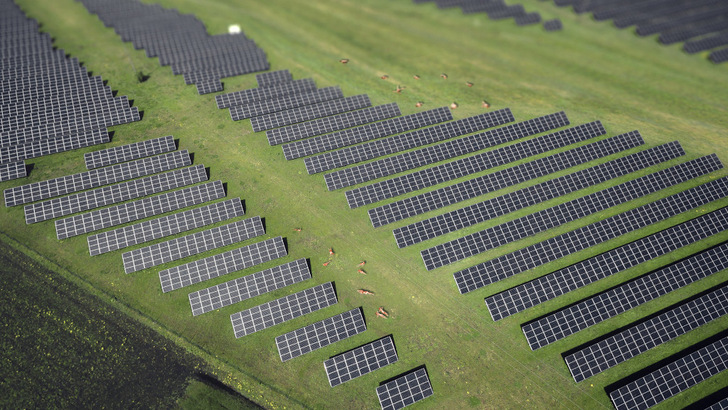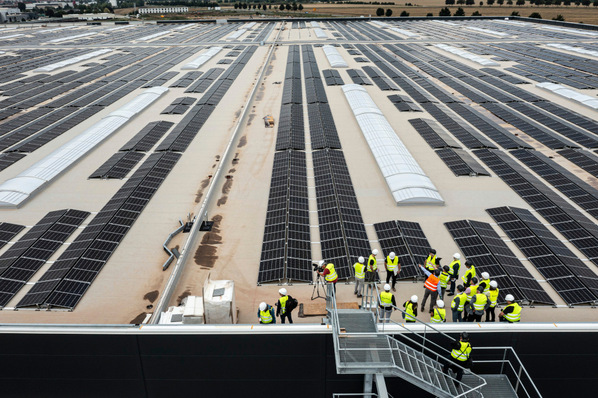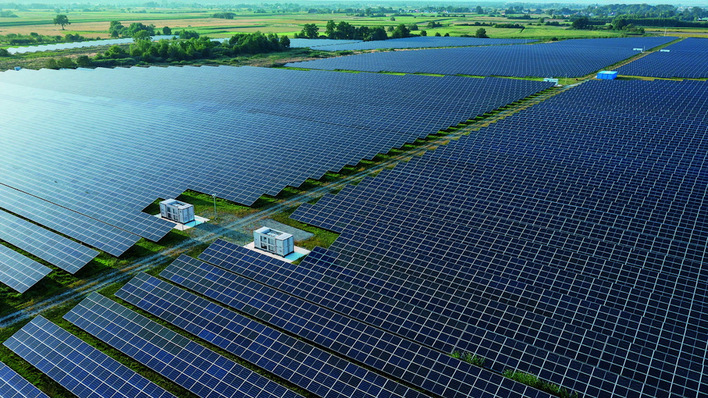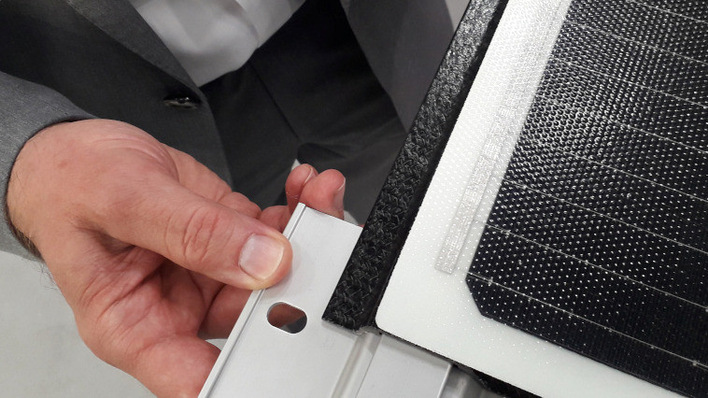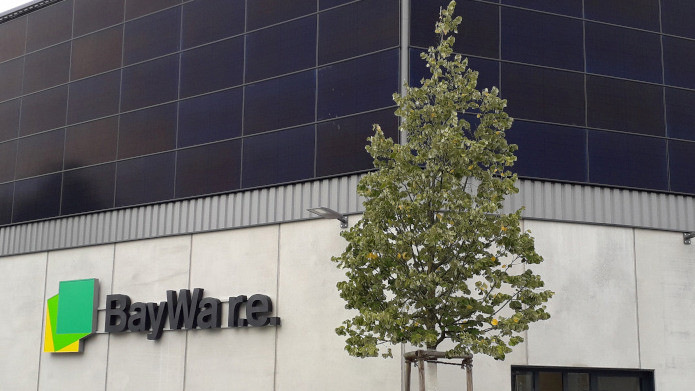There is broad agreement across the industry that the solar market has undergone a major transformation over the past 18 months. Whereas homeowners were the primary growth drivers in previous years, 2024 has seen most new capacity added in large-scale solar parks. This shift has not gone unnoticed by mounting system specialists, who are now looking to capitalise on the utility-scale surge.
Solar Investors Guide – Mounting on trickier terrain (e-paper free download)
One such company is PMT – Premium Mounting Technologies – which unveiled its latest ground-mount solution at Intersolar 2025. “Our goal was to address a niche that’s long been overlooked, namely small to mid-size ground-mounted projects and leftover land that’s only now becoming economically viable,” said managing director Bodo Krebs. The result is Titan, a modular system designed for easy on-site adaptation and fast installation.
Danish logistics giant DSV adds major PV array to warehouse roof
Building from the ground up
Titan’s purlins are square tubes that extend telescopically to the required length, enabling installers to fit modules from 1.7 to 2.5 metres long within the optimal clamping range. The tilt angle is also adjustable: tables are supported by a diagonal brace running from the purlins to the mounting posts. This brace is fixed to the purlins but can slide along the posts, giving installers precise control over the module angle.
To complete the installation, crosswise mounting rails are attached. No drilling is required – the rails are simply clamped onto the purlins. PMT also offers a clever time-saving feature: both the rail clamps and the module clamps can be fastened from below, eliminating the need to climb ladders. The system is intentionally straightforward, with a minimal number of components to reduce errors and accelerate installation. Integrated cable management accessories keep cabling organised and secure.
Simple solutions for complex PV projects with K2 Systems (webinar recording)
Streamlined for the field
Aerocompact has also introduced a new system aimed at small-scale ground-mount sites. It builds on the Compactflat GS bracket setup already used for green roofs, enabling installers to repurpose the same components for outdoor installations.
K2 Systems – new ideas for solar mounting (video)
Hammering it home
For ground mounting, Aerocompact’s brackets are anchored with nails rather than screws. “We first considered screw anchors, but the cost was prohibitive,” said technical managing director Christian Ganahl. “Nails are cheaper and easier. You just hammer them in at a 45-degree angle using a rotary hammer.” The result? There is no need for a separate screw-foundation system. If the installer encounters a rock, the nail can be twisted out using a side thread and reinserted at a new angle to bypass the obstacle. A base plate can also be added to the bracket for ballast with stones, which is useful when nailing into the ground is not permitted.
Licence-free planning tools from Aerocompact
Tougher by design
Unlike Aerocompact’s earlier green roof system, which used aluminium, the new setup relies on coated steel. “PV modules are getting bigger, and so are the loads,” said Ganahl. “Steel gives us the strength we need.” To protect against corrosion, Aerocompact uses a dip-coating process that applies a layer four times thicker than standard pile-driven systems. This robust finish allows the company to offer its usual warranty.
SL Rack – optimal module mounting for all roofs
The new product is designed for sensitive sites such as landfills and soft terrain, where driving posts is not feasible or permitted. It is also well suited to small installations where commissioning a geological survey or bringing in heavy machinery would be excessive.
K2 optimises for small-scale
K2 Systems has also updated its ground-mount offering. The N-Rack system, introduced last year, has now been refined for smaller plants—a fast-growing segment where traditional foundations often do not make financial sense.
Arausol pt 1 – smart substructures for large-scale solar
“Especially for small projects, the cost and effort of classic foundations are disproportionate,” said Lars Kreemke. “Heavy machinery just doesn’t pay off in most cases.” K2’s answer is a new adapter for screw foundations that streamlines installation. While pile-driven systems require extensive pull-out tests, screw foundations only need a basic soil classification and a sample, making it possible to size the setup reliably in advance.
When the going gets tough…
Ground screws also offer practical advantages. They are widely available, and many landscaping contractors already have the necessary tools and expertise. If a screw turns out to be too short during installation, it can easily be replaced with a longer one – a flexibility that driven foundations do not provide.
Unexpected obstacles? No problem. “If the installer hits a stone, they just unscrew the foundation, drill out the rock and reinstall,” said Kreemke. The system is built for on-site adaptability.
Arausol pt 2 – efficient engineering for high-capacity PV
A modular answer for mini parks
Torque data recorded during screw-in provides real-time feedback on load-bearing capacity and serves as quality documentation. “This new version of N-Rack is a cost-effective, modular solution for systems in the 100 to 150 kW range,” said Kreemke. “Our customers get reliable planning without the need for extensive testing and enjoy maximum flexibility on site.”
Following the land
T-Werk has also introduced an upgrade to its Silenos ground-mount line. The new Themis levelling clamp, unveiled at Intersolar, allows the entire racking system to follow the contours of the landscape. The clamp aligns the module rails, which are mounted on the purlins, to the terrain and enables up to 30 degrees of slope compensation without splitting module tables.
It is intuitive to use: the clamp slides into a keyhole-shaped recess in the purlin and consists of a base plate with a semicircular notch. A matching U-shaped pipe fits into the notch and is secured with a rounded shell.
Solargik – slim mounting for fields and challenging terrain (video)
Fine-tuning made simple
Installers fasten the cross rail to the upper pipe using a clamp. The semicircular interface allows them to adjust the table angle precisely by repeating the setup on the neighbouring purlin. Once the rails are aligned and tension-free, tightening the shell locks everything in place, clamping the lower plate and the upper assembly together. To save time, T-Werk delivers the purlins with the levelling clamps pre-assembled on site. (SU/TF)


